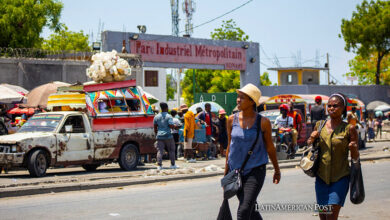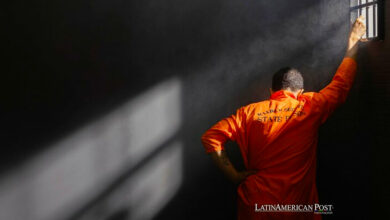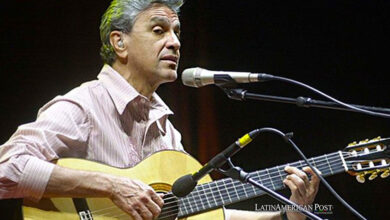2020 has already begun and it means the closure of an important decade for Latin America and its policy, as governments have faced challenges and important advances in social matters.

Hugo Chavez; Person holding LGBT flag; Odebrecht building entrance. / Photos: Venezuelan Embassy; Pexels; EFE
LatinAmerican Post | Juliana Suárez
Escucha este artículo
Leer en español: 10 años y 10 hechos en América Latina
These are some of the most important Latin American landmarks of the decade that ended, from 2010 to 2019.
1. The death of Chávez
The Venezuelan government announced on March 5, 2013 that its then president, Hugo Chavez, had died.
The Venezuelan president had come to power in 1998 through popular elections, after years before an attempted coup failed. With his death it was also thought that a dictatorial era was over for Venezuela. However, his successor was Nicolás Maduro, current president, who has managed to maintain the "Bolivarian revolution" of Chavez.
2. The death of Fidel Castro
This Cuban left-wing soldier lasted 49 years in power in Cuba, until in 2008 he officially left the post for health reasons. Although he no longer appeared as president, his legacy continued and he was still considered the leader of a country that had completely closed its doors to the world.
His anti-imperialist and anti-United States discourse led him to be loved by many and hated by others. After his death, in November 2016, the country began to take a radical path away. However, his brother Raúl Castro preceded him by maintaining the Marxist legacy. Currently, the president of Cuba is Miguel Díaz-Canel, who has followed the same line and belongs to the Communist Party of Cuba.
3. First Latin American Pope
The arrival of the first Latin American pope in the Vatican represented a milestone for the region. Pope Francis became the most important figure of the Catholic Church on March 13, 2013, after Pope Benedict XVI resigned in February.
Jorge Mario Bergoglio is a Argentinian Jesuit who has been recognized for liberal tendencies, so he has also been criticized for the most orthodox sectors of Catholicism.
4. Opening of Cuba to the world
This was one of the most important economic events that happened in the region. After Castro's radical legacy, which had left the country almost completely isolated and with a minimum – if not void – relationship with the United States, former US President Barack Obama managed to get a little closer to Cuba, establishing better diplomatic and commercial relations.
This economic opening began since 2015 and has been taking slow steps since then. Among other things, a US embassy in Havana and a Cuban embassy in Washington opened many years later.
5. LGBT rights
After a long journey, the LGBT community has made progress in some Latin American countries, where rights such as same-sex marriage have been recognized. Although it is still a minority persecuted, the struggle to enforce their rights has been hand in hand with protests and social movements.
6. Peace process in Colombia
Colombia signed a peace agreement in 2016 in which it had been working for at least 5 years. This fact signed the peace between the government, at the time of Juan Manuel Santos, and one of the oldest and largest guerrillas in the country, the FARC.
This conflict had taken over 250,000 fatalities, in addition to positioning Colombia as the country with the most internally displaced persons in the world. After signing, in November 2016, the guerrillas would have a political presence in Congress and carry with them a comprehensive demobilization process.
Also read: The "false positives" scandal: a long and perverse history in Colombia
7. Odebrecht
The biggest case of corruption of recent times by one of the largest construction conglomerates in Latin America. The Brazilian company gave bribes to different governments in the region. This scandal, which began in Brazil with the Lava Jato operation, ended up soaking up leaders from Brazil, Peru and Colombia, among others.
Since 2015, it has ended up with former leaders in jail and even accused a Peruvian former president committed suicide when his arrest warrant was known.
8. Corruption in Brazil
The previous scandal has soaked Latin American and especially Brazilian politics, where important figures have ended up immersed in corruption. Specifically in Brazil, two of its former presidents are currently linked to corruption cases: Dilma Roussef and Lula da Silva.
Lula da Silva, who has been considered almost a martyr by some sectors of the left, is convicted of corruption and was even imprisoned for several months. Currently, Lula is provisionally released but investigations are still ongoing.
Dilma Roussef, president of Brazil after the 2011 elections, was dismissed by Congress after leading a government with much discontent. The dismissal was the final decision after a controversial process with the manipulation of state accounts.
9. Social protests
The closing of the decade was marked as a moment of political and social crisis in many of the countries of the southern hemisphere.
Starting with Ecuador, where citizens protested against the President Lenin Moreno because of a decree that removed the gasoline subsidy. The protests reached such a point that the president declared a state of emergency and eventually ended up giving in to the requests.
To these facts were added countries like Chile and Colombia, which have had some of the biggest protests in the region's history. For their part, the Chileans achieved a partial change of the cabinet and a referendum to create a Constituent Assembly to change the Constitution, which was made in times of military dictatorship.
While in Colombia, after a month and a half of mobilizations, the government has not yet responded clearly to their requests. Both cases have been contaminated by acts of violence by the Public Force, which has left injured and dead people.
10. Political turns in the region
Whether from left to right or the other way around, the decade saw strong turns in politics in the respective elections. On the one hand, there are still great exponents of the left like Miguel Díaz-Canel in Cuba following the legacy of Castro, or Nicolás Maduro in Venezuela, successor of Hugo Chávez, Martín Vizcarra in Peru or even the arrival of Andrés Manuel López Obrador to Mexico , the first leftist president in that country.
However, the majority trend of Latin American countries in the last elections, especially in the South American region, has been a right turn. The main figure of this trend has been Jair Bolsonaro, an ultra-rightist who arrived in Brazil after a political instability soaked by corruption in public figures on the left of the country. Among others, Uruguay will begin its decade with a right-wing government with Luis Lacalle Pou after 14 years of the leftist party ruling.





